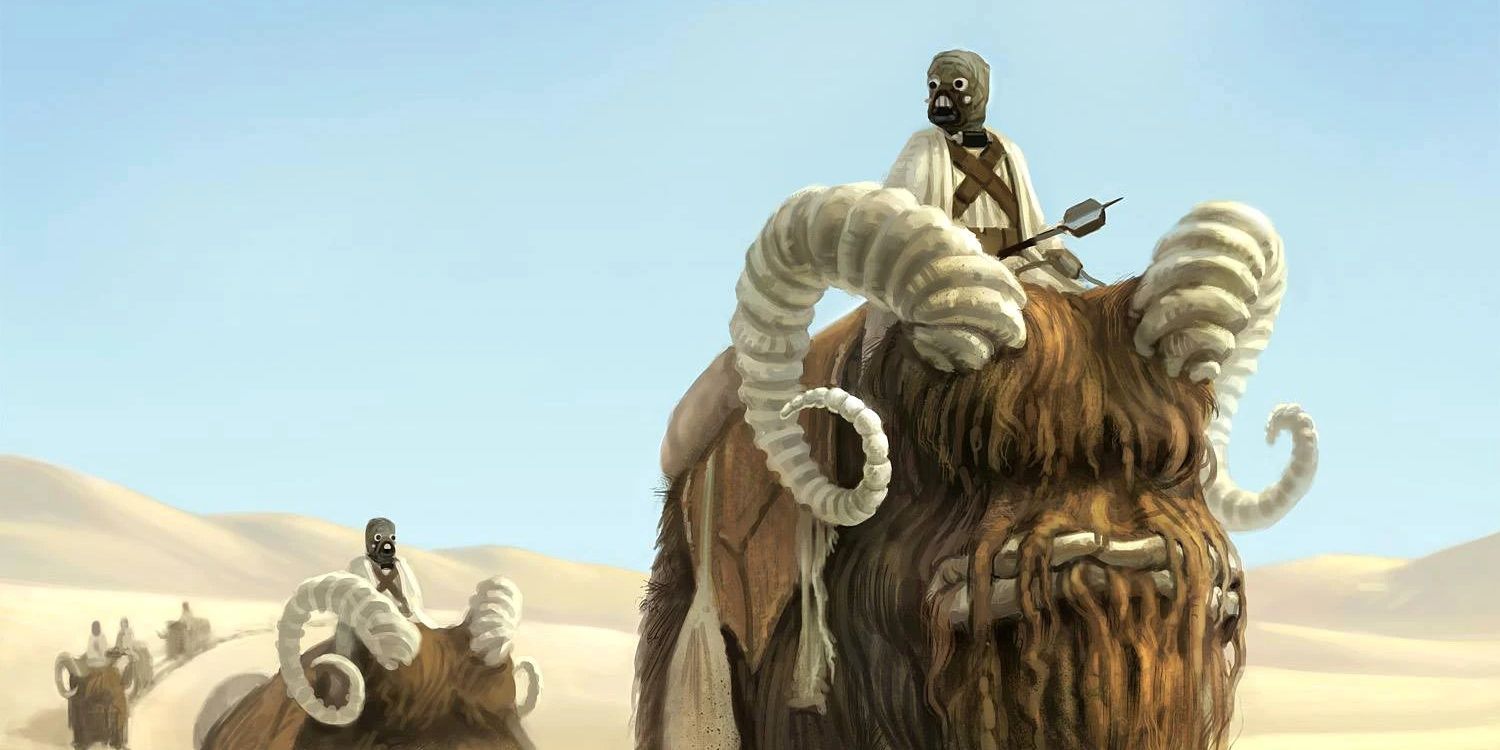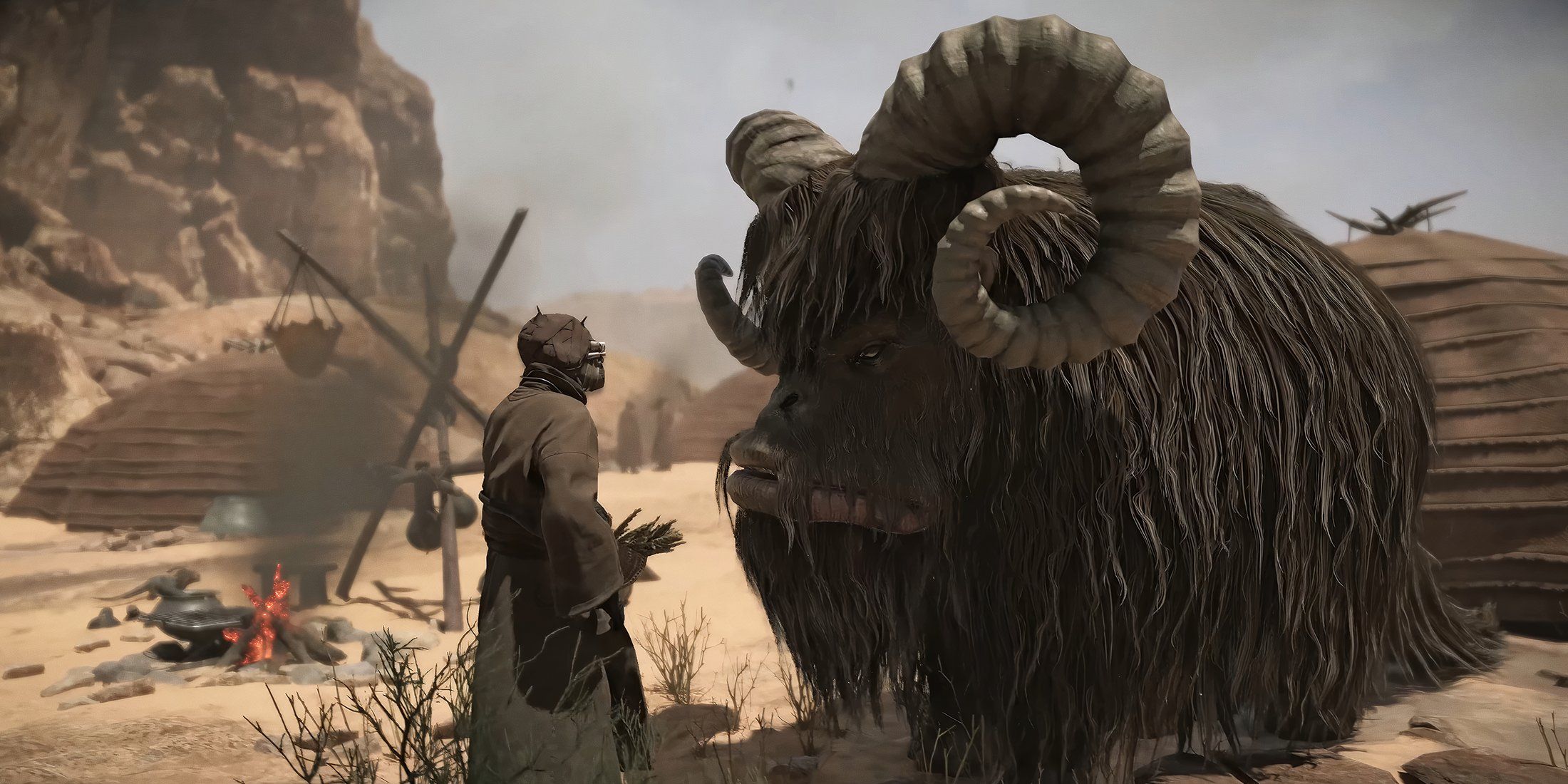The alien species of the Star Wars universe remain fun and creative over 40 years after their first appearances. While most fans focus on the sentient races, like Wookies and Twi’leks, there are plenty of alien animals that stand out. The squid creature in the Death Star’s trash compactor has evolved from a simple threat in a scary scene to a complicated Force-sensitive being. The Banthas are large, furry mammals that primarily appear on Tatooine, but they do a bit more than wander the desert sands.
Tatooine wasn’t supposed to be the most commonly visited planet in the Star Wars franchise. It was the home Luke was supposed to leave behind to go on his great adventure. As modern entries focus more on the past than the future, the films and series just keep going home again. The recent Book of Boba Fett series takes place almost entirely on the franchise’s first planet. Obi-Wan Kenobi starts and ends in the same location. That makes the native flora, fauna, and cultures of Tatooine more central to Star Wars than almost any other.
What is a bantha?
Banthas are, essentially, gargantuan space cattle. They stand a little over seven-and-a-half feet tall and weigh almost 9,000 pounds. Their bodies are covered in thick, shaggy, brown fur, which spills over their faces and eyes. After a bath, observers can see a bantha’s wide, bright eyes. Their mouths are huge, barely escaping their thick fringe. Banthas have curled horns that grow at a consistent rate, allowing experts to accurately note a bantha’s age by measuring them. Bantha tails are long, dragging behind them and leaving a trail as they walk. Their feet are broad and flat, possessing toes not unlike those of an elephant. For non-sentient animals, banthas are quite intelligent and actively social. They are omnivorous, but they’ve never been seen hunting in the franchise. They live in herds and remain naturally docile.
How do banthas interact with other species?
Sentient species breed banthas on various planets throughout the galaxy. They’re one of the most common cattle animals in the Star Wars universe. Banthas provide meat, milk, butter, clothes, and furniture for the people of the galaxy. Countless species bred and maintained herds of banthas, using practically every aspect of their biology. Their blood goes into a popular sparkling drink, their distinctive blue milk makes ice cream, and even their feces can be rendered into a form of fuel. Tons of people made their living as bantha herders. They’re so common that many slang phrases or common idioms reference banthas. People might describe something worthless as “bantha fodder” or a pointless endeavor as a “wild bantha chase.”
Banthas and Tusken Raiders
While many people used banthas for various purposes, no cultural group was more closely tied to the animals than the Tusken Raiders. The sand people of Tatooine shared a spiritual bond with their banthas. Every Tusken child, known as an “Uli-ah,” received a young bantha that would be their constant companion. When that young Tusken got married, the bride and groom’s respective banthas mated alongside them. The canon offers no word about same-sex relationships among the Tusken Raiders. The Tusken Raiders took diligent care of their banthas, riding them across the desert sands and into battle with various foes. Outsiders believed them to be inseparable, noting that a bantha would often die shortly after the untimely passing of its rider.
How were banthas created behind the scenes?
Ralph McQuarrie initially drew banthas much smaller than they eventually appeared. He imagined horses playing them on set. When it came time to shoot the creature’s first scene, the crew brought in an Asian elephant named Mardji for the role. With a fitted saddle and lightweight headpiece, Mardji portrayed the first two banthas from A New Hope. She was evidently not the easiest performer on the set, consistently pulling off her costume while the cameras were rolling. The cast and crew enjoyed having her around too much to complain. The post-production crew doubled her footage to allow her to play both banthas rather than hiring a second costumed elephant. The next bantha, the one tied up outside the Mos Eisley Cantina, was a massive paper mache puppet with two crew members inside. The Special Edition re-releases and prequel films used CGI to bring the banthas to life. In The Mandalorian season two, crew members created a new ridable puppet to harken back to the good-old days, securing that season an Emmy for Outstanding Special Visual Effects.
The banthas aren’t especially complex, but they are one of the framing elements that keeps the Star Wars universe feeling real and alive. They’re inextricable from the Tusken Raiders. The gradual increase in interest in the sand people also allows the banthas to gain a bit more attention. Banthas are a fun and charming species in the Star Wars universe, even if they rarely do more than wander the desert with a Raider on their back.






